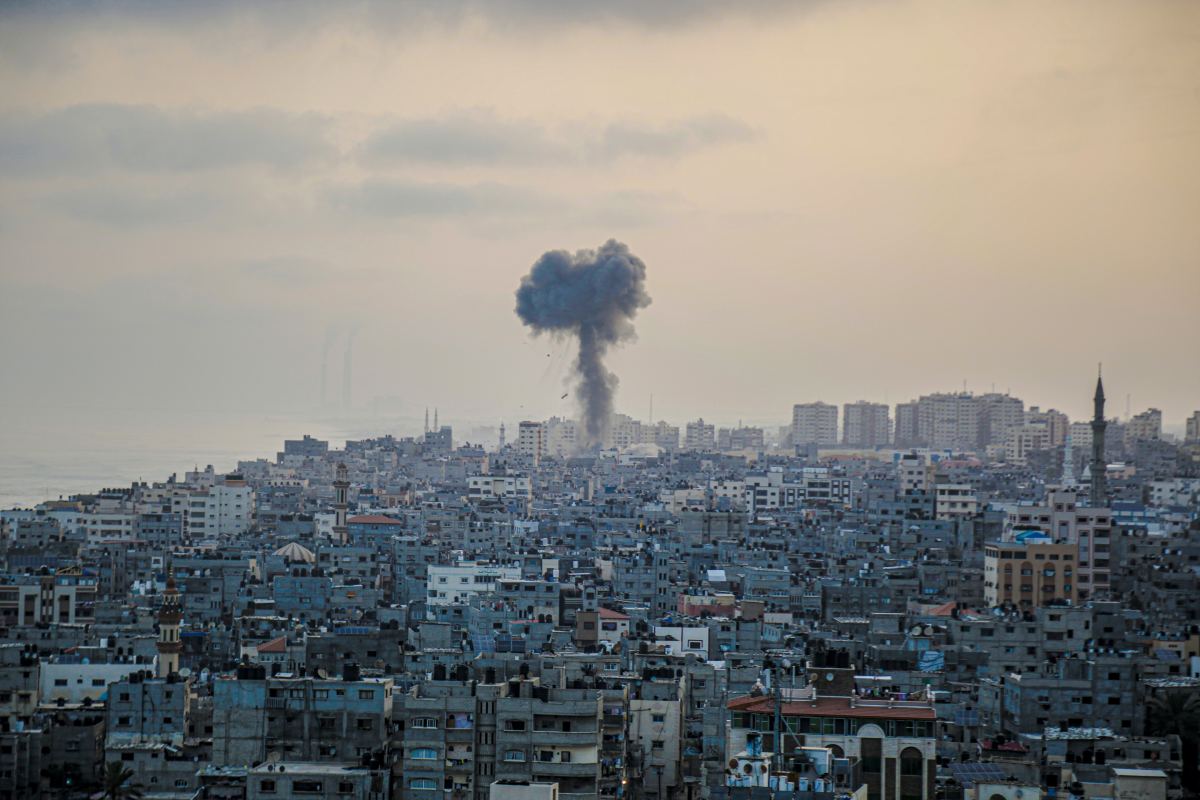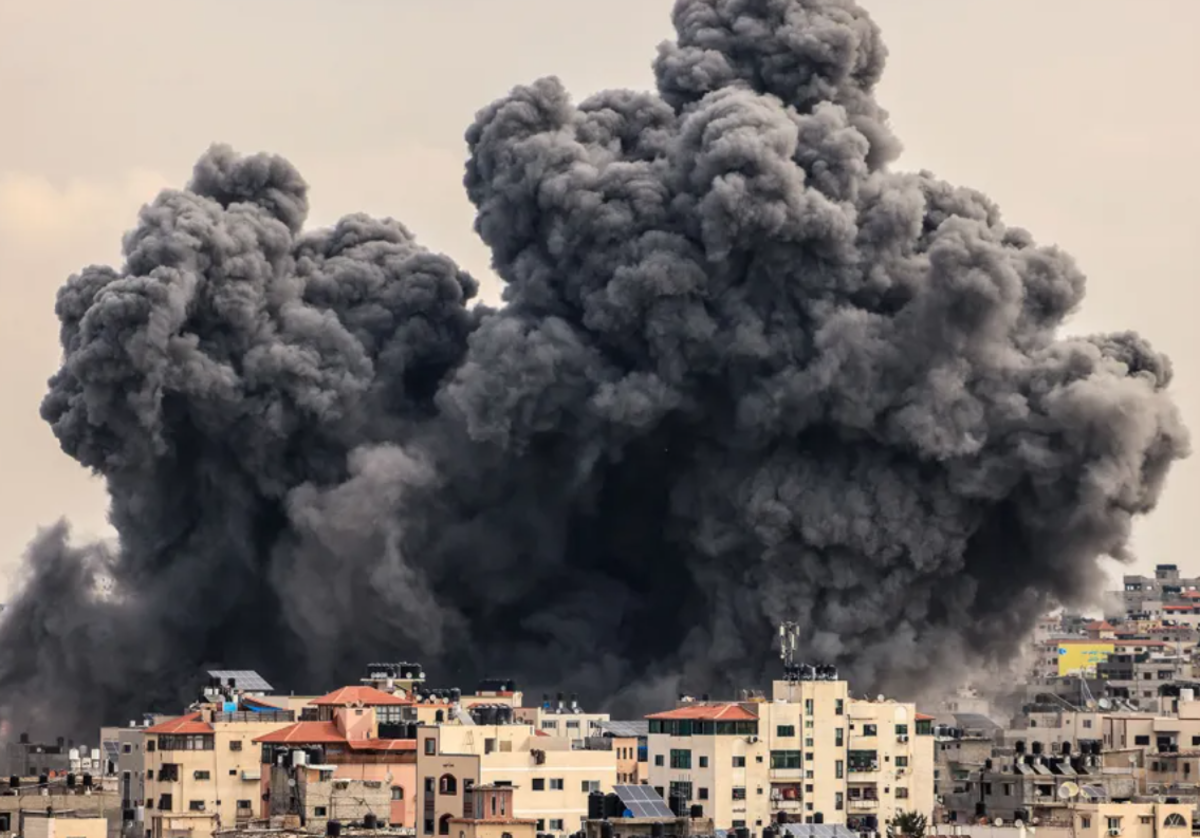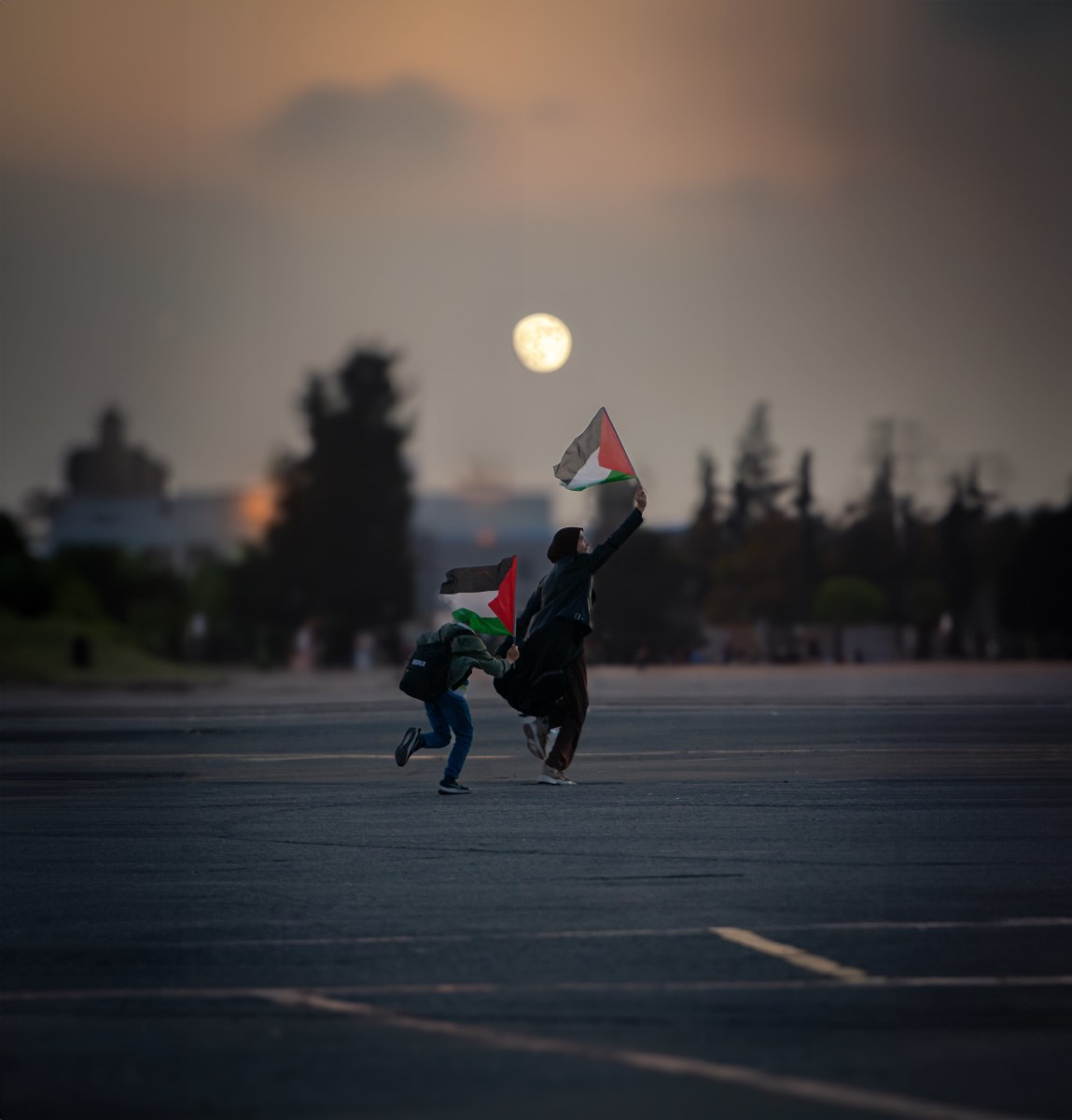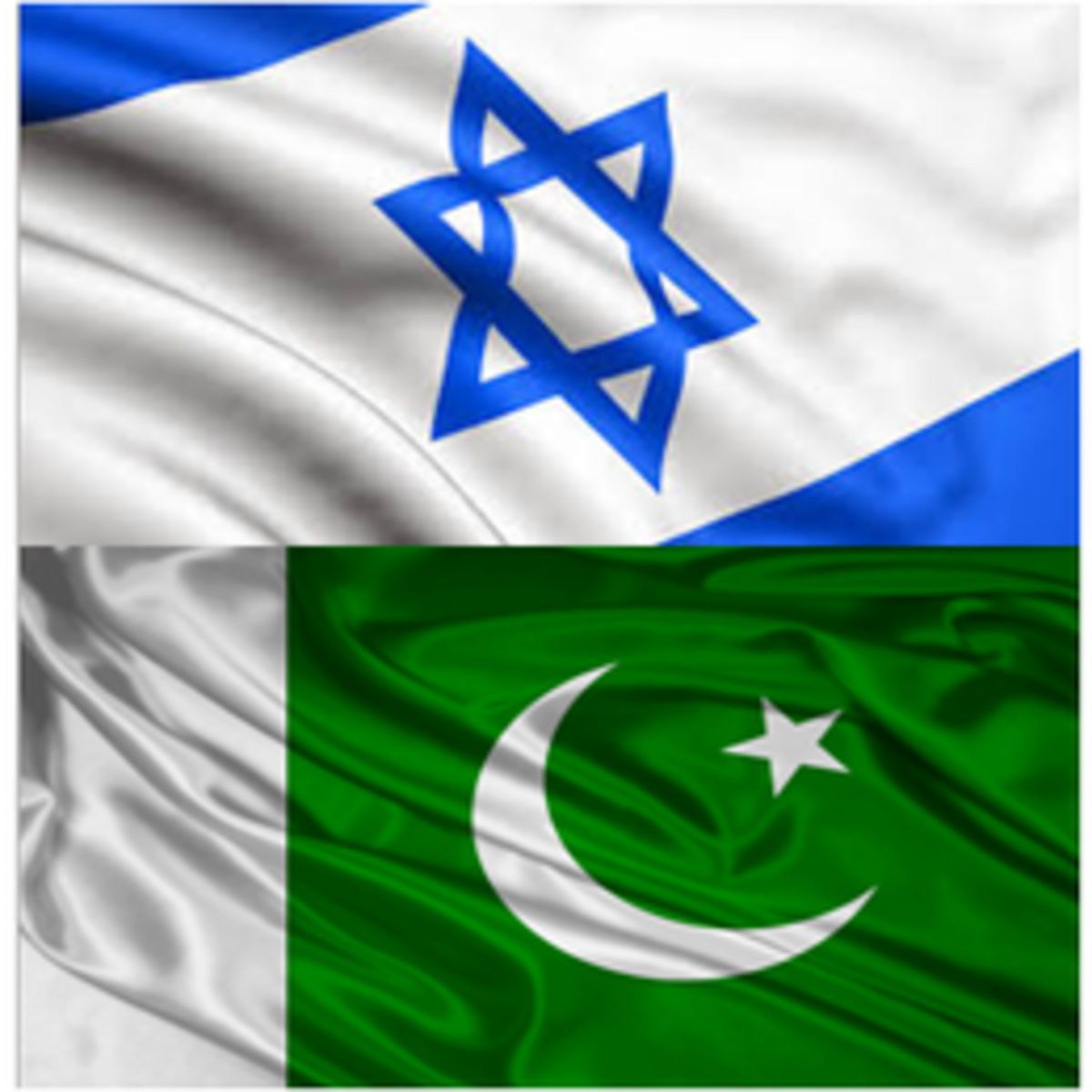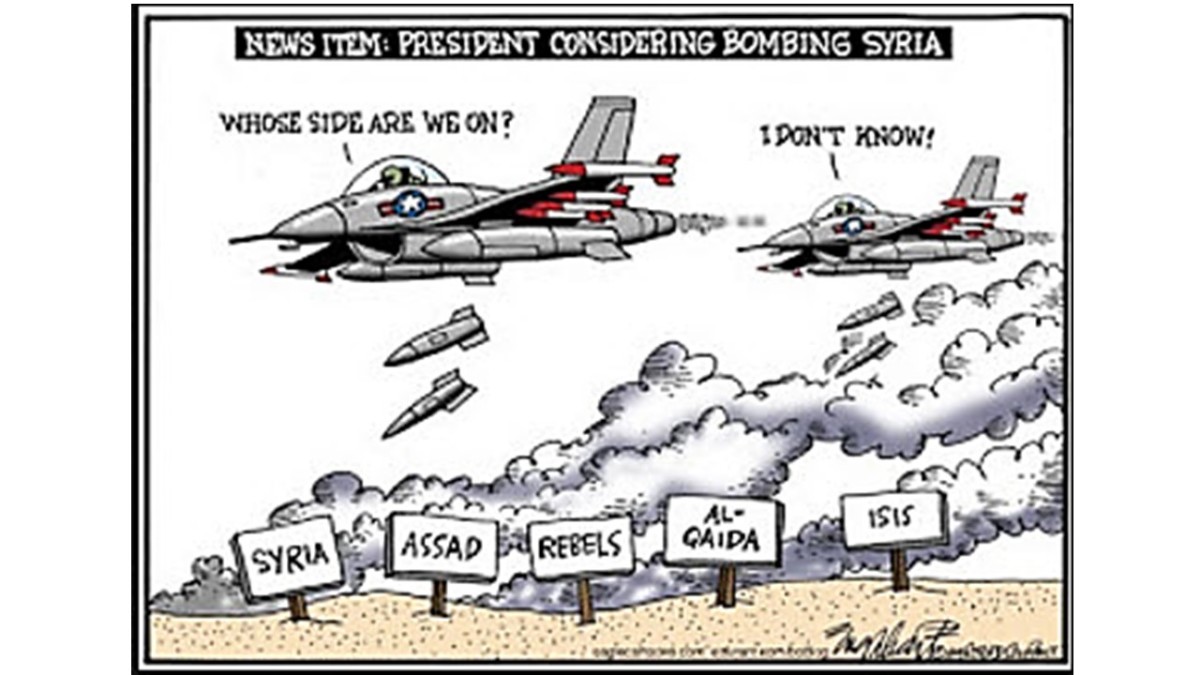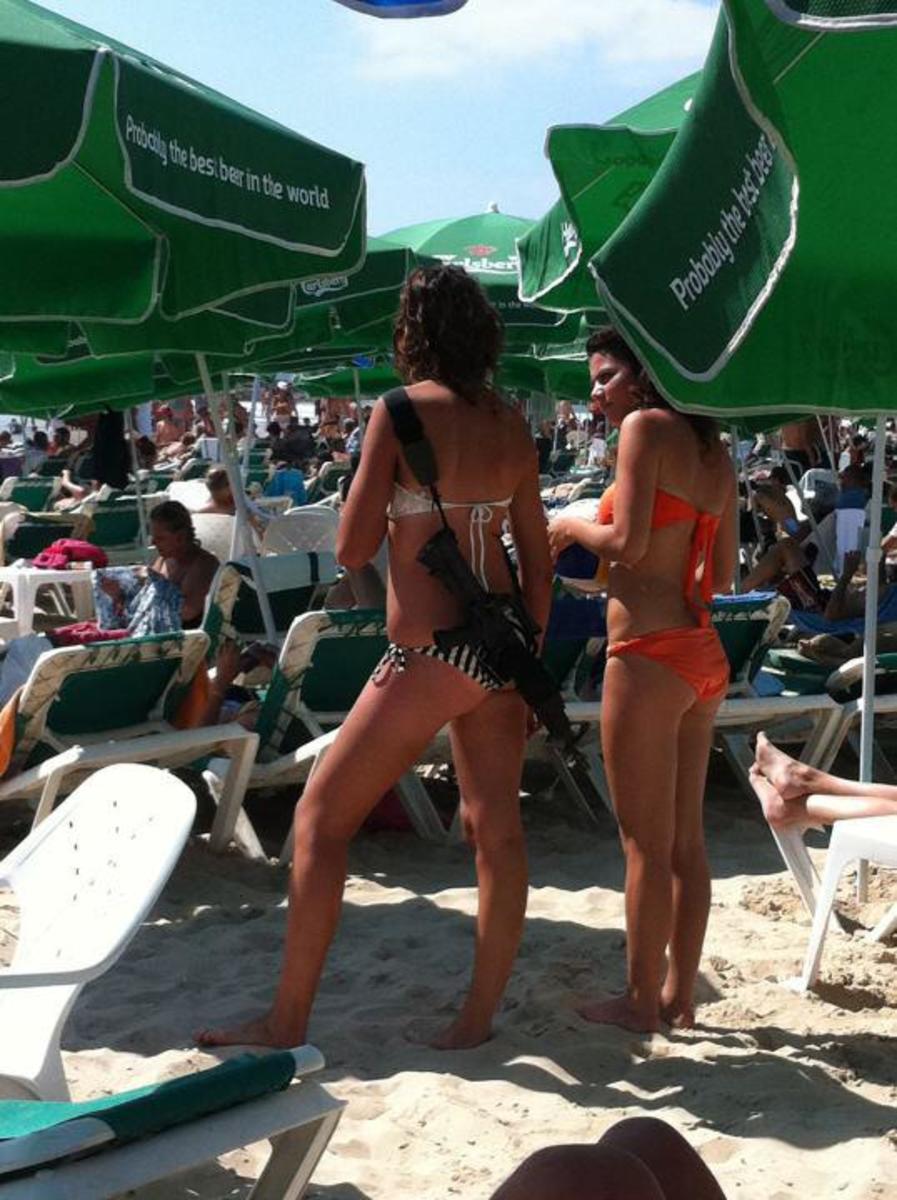Gaza 2009: This Is Not a War, It's a Massacre
“They stole my land, burnt my olive trees, destroyed my house, took my water, imprisoned my father, killed my mother, starved us all, humiliated us all. But I am to blame: I shot a rocket back. So they stole more of my land, burnt my olive trees, destroyed my house, took my water, bombed my country…”
Anonymous placard on display London Jan 3rd 2009.
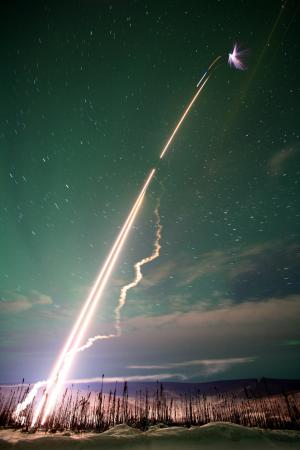
There’s a story going about. It runs something like this: because Hamas have been lobbing rockets at unarmed civilians in Southern Israel, the Israeli government have been forced to attack them in Gaza. The death of ordinary Palestinians (including more than 400 children) is entirely due to Hamas, who use their own people as human shields. The Israelis use every means possible to minimise civilian casualties.
The story is told in this form in the National Post in Toronto by Lorne Gunter: “Suppose you lived in the Toronto suburb of Don Mills," he writes, "and people from the suburb of Scarborough – about 10 kilometres away – were firing as many as 100 rockets a day into your yard, your kid's school, the strip mall down the street and your dentist's office?”
Or again in this form in a letter to the Irish Times in Dublin by the Israeli Ambassador, Zion Evonry: “What would you do if Dublin were subjected to a bombardment of 8,000 rockets and mortars?"
The answer is implied in the question, of course. What would you do if you were being unjustifiably attacked in this way, by some irrational, brutal enemy, whose only purpose is to destroy you and all that you love?
This is the justification for the onslaught against Gaza which has been taking place since December 27th and which has now claimed in excess of 800 lives.
It’s a story, of course. Some stories are true. Some stories are not. This particular story has the advantage that it sounds like it could be true. Indeed, you can see the proof, there, in those spiralling smoke trails swarming into the sky, and in the scenes of devastated buildings and hysterical human beings that follow.
We all tell stories.
We construct the world in narrative form so that it fits in with the image we want to create.
This is as true of nations as it is of individuals.
The trouble with this story is that it seems to have taken hold in everyone’s mind, and that you hear it, in one form or another, over and over again, either implied, or openly stated, from BBC reporters and other journalists, or written between the lines of almost every newspaper article; not to speak from the mouths of your friends who, while shocked at the terrible images coming out of Gaza, at the scenes of horror and carnage that are being shown (most too horrific to be aired) nevertheless shrug with sadness and resignation at the end of their sentence and mention those rockets.
It always ends up with those rockets.
Almost no one asks the opposing question: what would you do as a captive and dispossessed people living in the 21st century equivalent of the Warsaw ghetto, whose border points and crossings were controlled by armed soldiers, living under a blockade with barely the minimum food and fuel to subsist upon, who are regularly subject to targeted assassination, to arbitrary arrest and violent attack, and now, it seems, to a full-scale military assault terrorising a whole population, slaughtering women and children and whole families in their beds?
How do a few home-made rockets compare to that?
Indeed there is a grotesque imbalance in the reporting of this on-going brutality, where scenes of dismembered Palestinian children held by blood-splattered parents screaming with horror and grief are shown next to scenes of an Israeli women crying because a rocket has landed nearby and disturbed her sleep.
So far, at the time of writing, 10 Israelis have been killed. Five of those were Israeli soldiers killed by their own side.
This in not a “conflict” in any recognisable sense of the word. It is not a battle. The language of war does not apply in this case. The fourth largest and second best equipped army in the world are facing a rag-tag militia armed with home-made rockets welded together in workshops usually reserved for car repairs.
It is often said that Hamas are targeting civilians. This is a philosophical absurdity. You cannot target those rockets. They are the equivalent of tin cans full of weed killer. Hamas are targeting no one. The most they can do is to point the rockets over the wall that imprisons them in the vague hope that they might hit something. We see pictures of scenes where a rocket has hit a car or a house or a yard. How many more of those rockets are landing harmlessly in fields? They make a big noise and they make people jump. They bring attention to the Palestinian cause. Occasionally they kill people. This is always to be regretted. But the degree of murder and mayhem, of terror, of violence, of bloodshed and carnage, of psychological trauma, on the one side, is entirely disproportionate to the level of provocation on the other.
The Israelis, on the other hand, say they do not target civilians. However, they know perfectly well that civilians will be killed, are being killed. They also know in what numbers they will continue to be killed. If a gang intending to commit a robbery take weapons with them and then “accidentally” kill the guards, they are not only guilty of the lesser crime of robbery, they are also guilty of murder. Committing a crime while in pursuit of some other goal is no less of a crime.
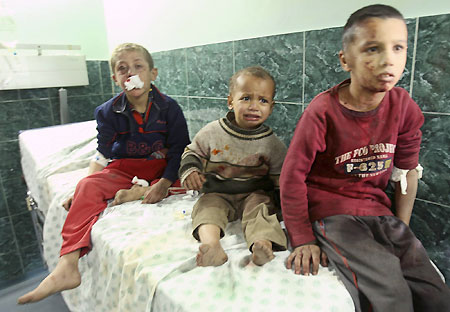
We’ve heard the story: now here are some facts. Hamas are the legitimate government of Gaza, having been elected in free and fair elections in 2006, making them the only democratic government in the Arab world. Many of the buildings destroyed in the first wave of Israeli attacks were government buildings, the necessary infrastructure of a nation. By destroying those buildings the Israelis are making it impossible for the people of Gaza to govern themselves, regardless of which party they choose. Also, many of the so-called legitimate targets killed in the first wave of bombings – those ones not counted amongst the civilian dead - were unarmed policemen and government bureaucrats, mere functionaries of government, not Hamas operatives or terrorist targets at all, just men and women employed to do a job. Again, it is clear that Israel are targeting the civilian infrastructure in order to make Gaza ungovernable.
So, having backed a coup against the elected government of Gaza, which was vigorously defeated by Hamas, the Israeli government then imposed a blockade, depriving the population of food and fuel and clean water. This is a form of collective punishment and is a crime under International Law. By sealing Gaza off from the rest of the world, by limiting its access to the basic necessities of life, Israel has turned this overpopulated land of refugees into a ghetto, the exact equivalent of the Warsaw ghetto of the earlier 20th century, a place where a whole population is imprisoned and punished merely because of their race.
But, you say, they should still not be firing those rockets. True. There was a ceasefire. It went into effect on June 19th 2008, and despite the fact that Israel never fully abided by the terms of the agreement, continuing to maintain a partial blockade despite international pressure, rocket fire from Gaza had virtually stopped, it being recognised by independent observers that Hamas was doing everything within its power to discipline and control other groups, such as Islamic Jihad, with access to weapons.
The ceasefire was broken on the 4th November 2008, not by Hamas, but by the Israeli Defence Force in an attack against a house in Gaza in which six members of Hamas's military wing were killed, including two commanders.
This is the background to the renewal of rocket attacks after this date, a fact that the Israeli government know full well, but which their spokesmen omit to mention whenever they talk about rocket attacks as the excuse for the current invasion.
Try looking at it the other way around, once more. Imagine if Hamas had managed to kill several high-ranking members of the Israeli Defence Force in a raid. Imagine what Israeli propagandists would have made of that, what news headlines there would be throughout the world. And it’s a measure of the blatant and unapologetic bias of our media industry that not only was this hardly noticed at the time, but it has been completely forgotten in all subsequent reports, which continue to proclaim, along with Israeli spokesmen and women, that the “cause” of the current conflict is Hamas rocket attacks on Israeli citizens, not Israeli attacks upon Hamas.
Since then, of course, it has been a horrifying tale of atrocity and murder. UN schools full of women and children targeted. Whole families slaughtered. Cousins, uncles, fathers, mothers, brothers, sisters, sons and daughters killed. There is probably not a single family in Gaza now who hasn’t lost at least one member of their extended family. Ambulances and aid workers being shot at. Over 800 dead and several thousand wounded, a large percentage of them women and children. Dismembered bodies lying in the streets. Corpses tangled in the dust and rubble of collapsed buildings. Hospitals overwhelmed, the corridors running with blood. Children starving while their parents bodies rot. Shortages of food and medicine. Days without fuel. Nowhere to run, nowhere to hide. No shelters. No route out of the carnage. All the border crossings shut tight, penning in the entire population. Death in the streets and houses. People waving white flags being shot at. People shivering in their houses with all the windows open in the depths of winter because otherwise the boom of nearby shells would blow out the glass. The daily fear, the daily trauma, the living nightmare of existence, a whole generation of children who have only ever known this horror, this fear, the death that comes screaming from the sky. Imagine what this must do to a child’s mind.
Is there such a thing as hell? Of course there is. Hell is man-made. It is a war-zone, and it exists in Gaza right now.
So there are stories and there are stories. 1.5 million stories in Gaza. Stories of fear and injustice, of mutilation and dismemberment, of pain and grief and horror. But here is one story that sums it all up for me. It is the story of the extended Samouni family, sheltering in an building owned by one of their relatives, 70 people in all, who were directed into the building by the IDF, which was then subsequently attacked, killing 25 or more relatives, most of them children, and leaving many more wounded. One shell after another after another hit the building, the doors and the roof. Fathers and mothers gazing helplessly on at the sight of their children, brains lying splattered on the floor.
The Samouni family are not Hamas. They are farmers. They have taken no part in the resistance, and, indeed, are critical of Hamas. But the collective punishment of the Palestinian people includes the Samouni family too it seems. No Palestinian is innocent.
So, now, ask yourself does this make Israel more secure or less?
And if in five months or a year or five year’s time one member of the Samouni family, driven mad with grief, straps an explosive corset around their waist and walks into an Israeli mall and blows themselves up along with a number of innocent Israelis, will the news reports ever refer to what happened on the day an entire family were targetted?
Will they say, “It is a member of the Samouni clan, he saw his daughter’s brains being splattered onto the concrete, that is why he is mad, why his heart is so full of hate.”
Of course not.
It will be made another excuse for the collective punishment of the whole Palestinian nation. And so the violence will continue.
Gaza: Witness to a Massacre
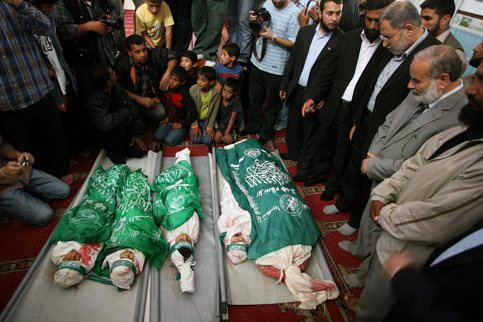
Compiled from interviews conducted by The Guardian, the Telegraph, the Independent and Al Jazeera.
Bombing
Wael Samouni, 32, vegetable stall holder: "We were sitting and suddenly there was bombing on our house and everyone started to run. There were three rockets. I have no idea where they came from. I looked to my side, took hold of my boy Mohammad and I started to run. As I ran I looked back and saw on the floor my mother, two cousins and three of my children. All dead. It's a massacre. I'm 32 years old and I've never seen such things as this. I couldn't help myself or any of those around me. We just want to live in peace."
Nael Samouni, 36. His wife and daughter had been in Wael's house at the time of the shelling. Both were killed: "I wanted to go and join them the night before, but it was too dangerous to go out. If anyone moved he would be shot. Then when I heard the bombing this morning I saw people running. I saw an injured man fall to the ground. I ran to help, but there was an Israeli sniper in the house next door who shouted: 'Leave him alone.' We couldn't rescue anyone."
Ahmed Samouni, 16: “It was the third missile I remember. The other ones had killed my elder brother and injured people, they kept bleeding. But the third missile, that killed them all. My brother was bleeding so much and right in front of my eyes he died. My other brother Ismail, he also bled to death. My mum and my youngest brother, they are gone. Four brothers and my mother, dead. May God give them peace."
Mohamed el-Halby, a paramedic: “On the day we got permission to rescue them, the army told us to leave the ambulances around two kilometres from the house. So we walked and all around us we could see they had bulldozed the area. The houses we passed had Israeli soldiers standing on the roofs. We went inside and heard screams coming from one room. There were about 15 people inside, two were dead, the rest sitting around them. That was just one room.”
Raed el-Heleky, paramedic: ”We saw people lying dead on the streets. More than nine along the way before we got to the houses. We only went into five homes, there are other homes in the area and I am sure there are more dead in these houses. But the Israeli army stopped us from going any further.”
Mohammed Shaheen, a volunteer with Palestinian Red Crescent: "Inside the Samouni house I saw about ten bodies and outside another sixty. I was not able to count them accurately because there was not much time and we were looking for wounded people. We found fifteen people still alive but injured so we took them in the ambulances. I could see an Israeli army bulldozer knocking down houses nearby but we ran out of time and the Israeli soldiers started shooting at us. We had to leave about eight injured people behind because we could not get to them and it was no longer safe for us to stay.'
Ahmed Samouni: ”We were put in an ambulance, but there were still people inside the house, dead and injured. For days we all bled. We were so hungry; I remember giving my brother Isaac a tomato to eat before he died.”
Ahmed Ibrahim Samouni, 13, who was wounded in the leg: "Abu Salah died, his wife died. Abu Tawfiq died, his son died, his wife also died. Mohammed Ibrahim died, and his mother died. Ishaq died and Nasar died. The wife of Nael Samouni died. Many people died. There were maybe more than 25 people killed.”
Ahmad al-Samouni, 23 religious studies teacher: “"One shell hit the door, killing my cousin Muhammad immediately. One shell, I believe it was from an Apache, hit the ceiling. Then another shell and another. I could only recognise my mother Rahmeh from her clothes and earrings because part of her head was gone.”
Baba
One of the infants was the five-year-old daughter of his cousin Salah. "Her last words were 'Baba, Baba' and she died. She was hit in the head.”
Maysaa, 19, a mother: “When the smoke began to clear, I looked around and saw between 20 and 30 bodies, and 20 wounded. The dead included my husband Tawfiq and my father-in-law Rashed, who was hit in the head and whose brain was on the floor, and a five-month-old baby whose whole brain was outside his body.”
Maysaa says she escaped with her daughter and brother-in-law to the house of an uncle. There she found at least 40 Israeli soldiers and about 30 Palestinians. Some of them were blindfolded. The soldiers administered first aid to Maysaa and her daughter before releasing them, but, she says, said they would keep Musa and his uncle "in case Hamas came". She adds: "I understood that they intended to use them as human shields."
Wael Samouni, later, in the hospital, talking about his 6 year old son, Abdullah, who survived. Wael had thought he was dead: “I didn’t know what to do, I still don’t…look at him he is so ill, they are all terrified. He cries all the time. His shoulder is hurt and it has infection but he can’t stand the smell, he cries when he looks and smells his wounds. And his leg, look. I want to take him out of Gaza for treatment and I want to be able to go back to the house and get the rest of my family so that I can bury them.”
The Israeli military denies targeting any buildings in the area and says it never forcibly gathers civilians in a specific building. It investigated the incident but no soldiers were ever prosecuted.
Useful links
- Palestine Solidarity Campaign
The Palestine Solidarity Campaign works for peace & justice for Palestinians, in support of human rights & against all racism - True Torah Jews Against Zionism
True Torah Jews is a non-profit organization of Orthodox Jews dedicated to informing the world that all Jews do not support the Zionist state called 'Israel', and that to equate traditional Judaism with Zionism endangers Jews worldwide. - BDSmovement.net | Palestinian BDS National Committee
BDSmovement.net: a portal for the movement for boycotts, divestment and sanctions against Israel until it complies with international law maintained by the Palestinian BDS National Committee (BNC)
- Anti-Zionism Is Not Anti-Semitism: What You Can Do About The Atrocities In Gaza
- The Nazification of Israel
My relationship with Israel started sometime in the late 60s: 1968 or 1969. It happened unexpectedly. We were reading the Merchant of Venice

© 2009 Christopher James Stone

